Introduction
Before you can sell anything to your customers, you have to know exactly who they are.
That’s not easy in the digital age.
You need to find the information and then it may or may not be correct.
Claire and John Easley are the founders of Carbon6 Rings, a carbon fiber jewelry company that makes hand-crafted pieces in America.
They won Shopify’s Build a Business VI award by going out of their way to speak with customers and solve their problems.
Now, they have grown their business into a $1.7 million company.
Here’s how you build a business worth millions through personalized customer service, just like Carbon6 Rings.
Start with cultivating a “mindset segmentation”
A “mindset segmentation” means getting to know customers as people rather than generic numbers or “users.”
But this tactic means going farther than just reaching out to customers.
You have to build an actual relationship with them.
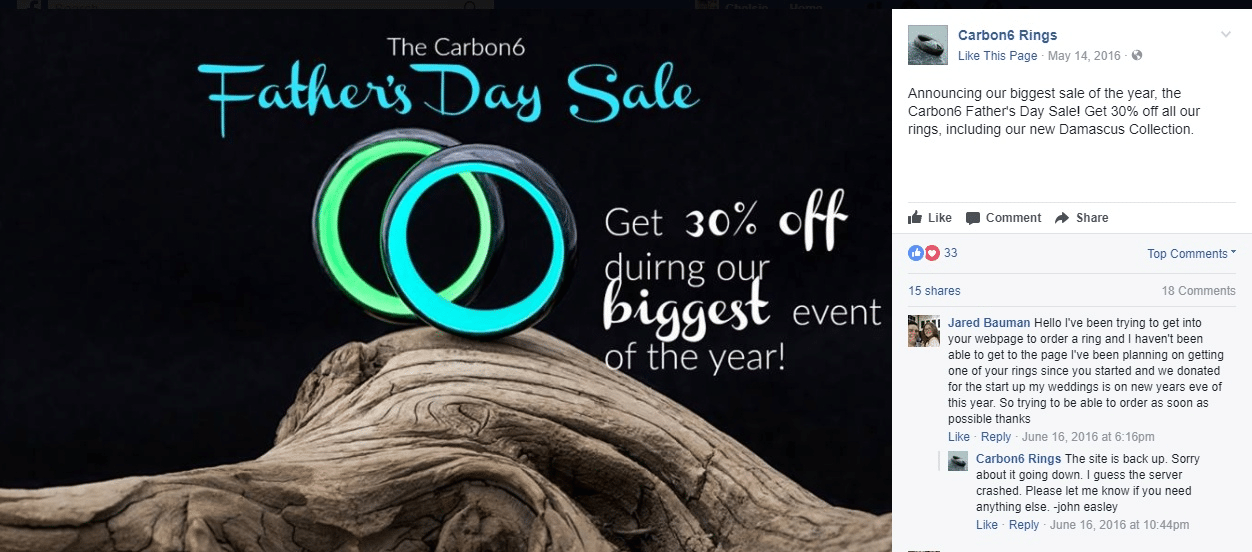
So how can you start?
Well, you have to look beyond how the customer sees your brand. Here’s why.
According to John Easley, that connecting with clients on a personal level helped him and Claire build their brand fast.
“We found that as we would talk with them and answer messages in a real way, we don’t have any robots or anything, that more people understand the value and purchase our product,” he said.
Basically, you’ll want to begin by taking the time to make sure that real human beings are speaking with your customers – not automated bots.
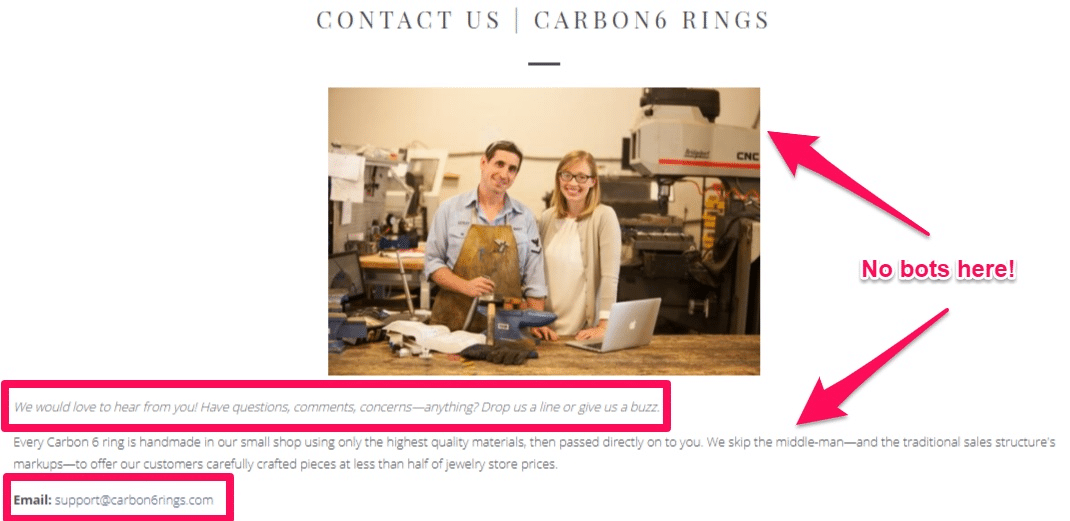


Mindset segmentation can be broken down into these five parts.
Then, once you have each of these five down, we can dive into collecting the data from your customers to take action!
Let’s get started.
Part #1. Identify your customer beliefs.
What principles drive your customers?
A customer’s beliefs can be picked up on by looking at what drives them to buy. For example, are they independent? Are they outgoing or reserved?
Are they the adventurous type? How do they view the world?
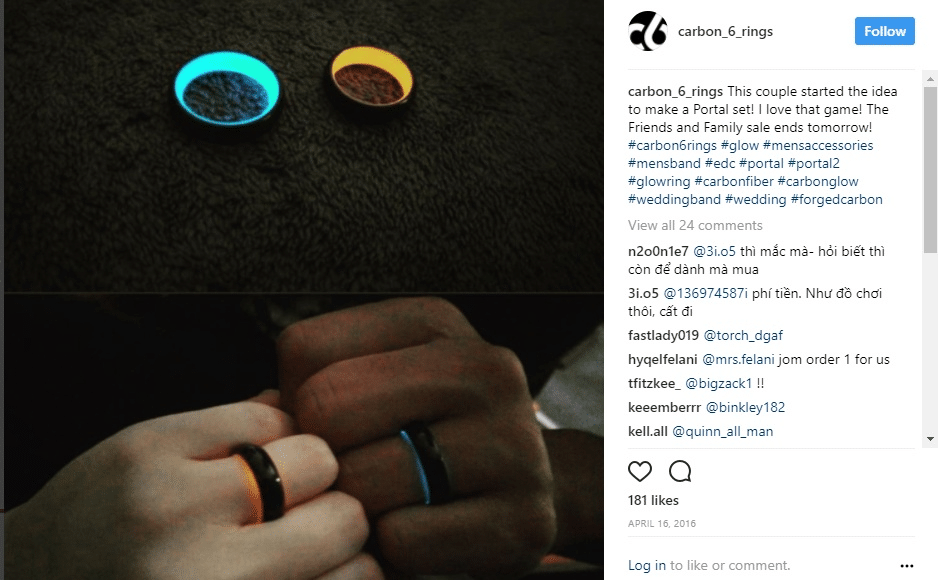


Do they feel happiest around friends, enjoy traveling to distant places, or like to stay at home?
There’s no wrong or right way to answer these questions. But you do need a general idea. And you have to make sure that their beliefs and morals align with your company’s values.
If they don’t, customers will feel that your business just isn’t for them. They have to think that your company “gets” them and their lifestyle.
There’s an easy ways to start gathering data.
You can simply spy on them.
For example, Followerwonk is like Google Analytics for Twitter.
You can search for people based on the keywords they use inside their bio.
Let’s say you’re looking for “fashion bloggers.” These people believe they’re fashion-forward. So a quick search will turn up thousands of results.
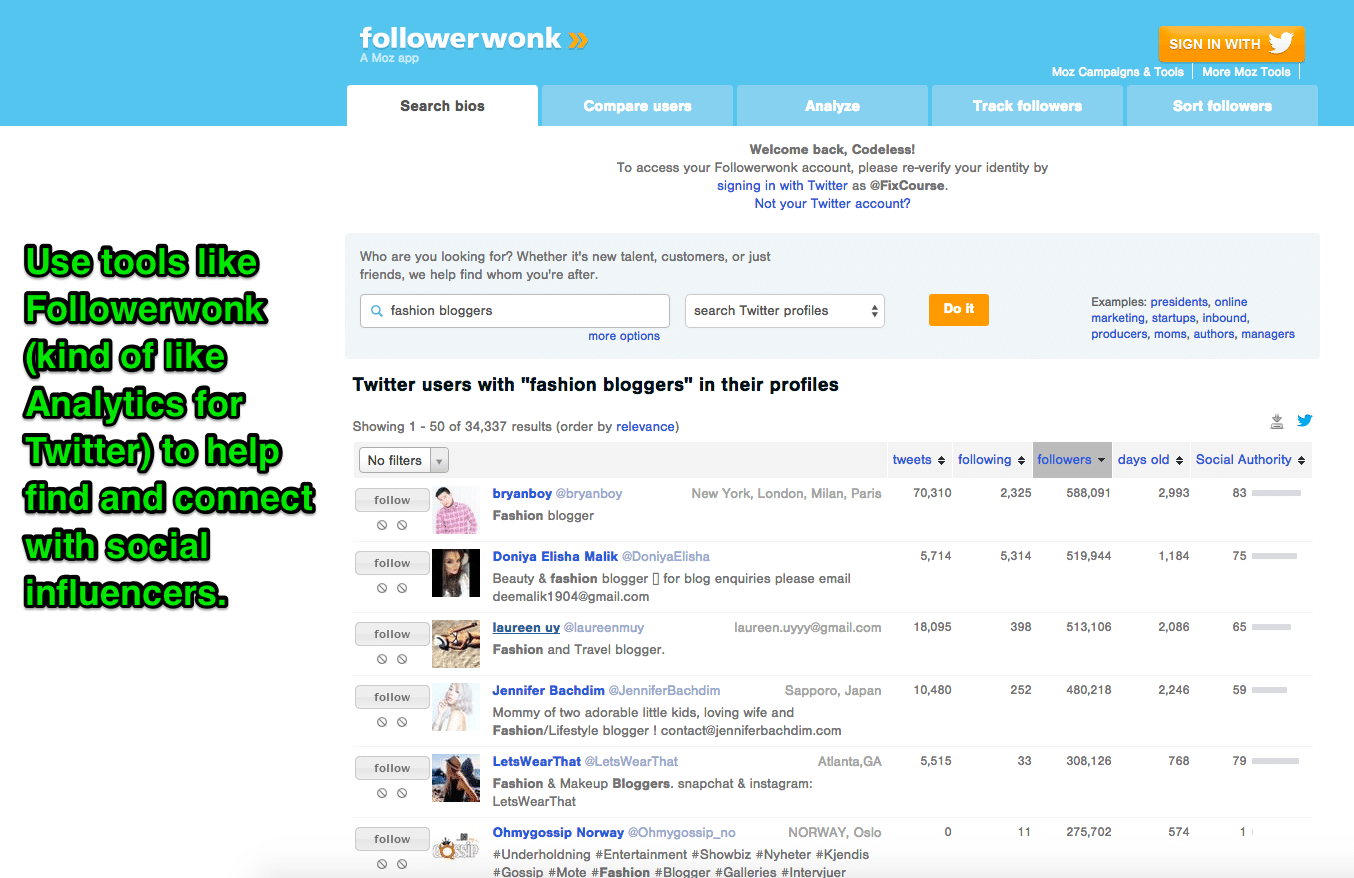


You can also use the “Affinity Report” inside Google Analytics.
For example, Google Analytics will pull demographic data based on your audience.
Then you can look to see what else these people are interested in.



Part #2. Understand their hopes, dreams, and fears.
Much like the part above, you have to lock in on customers’ hopes, dreams, and fears so that you can double check that your company’s values meet their beliefs.
Basically, you don’t want to disappoint them.
And you also want to make them feel better, comforted, or understood.
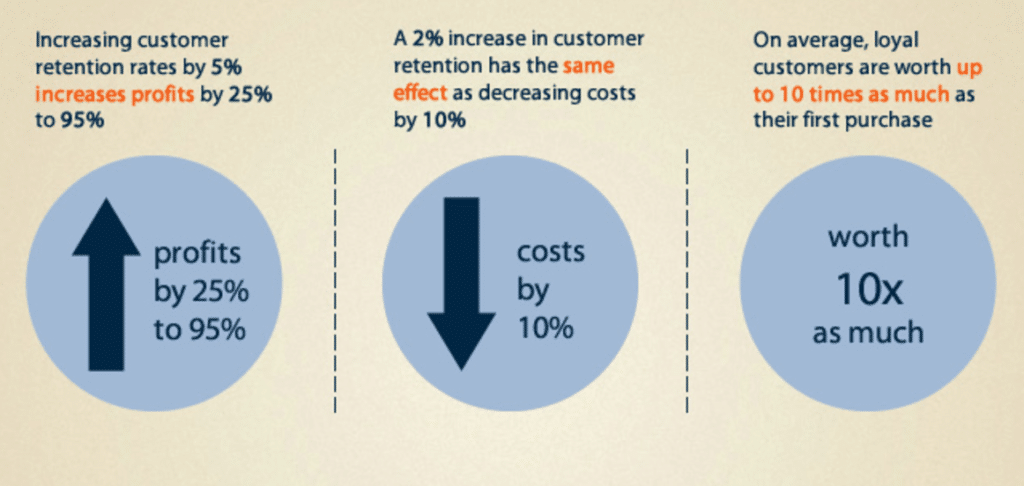


Playing into their hopes, dreams, and fears means that they will be pleased with you, make a purchase, and continue to buy from you later on down the road.
This kind of trust in a buyer-seller relationship simply can’t be bought or faked.
My favorite example here is to start by asking about their dreams and aspirations.
You need to know what they’re trying to do or be, before you can figure out how to help them do it.
Notice that this has nothing to do with their demographics. Instead, you’re trying to pinpoint the underlying motivations behind why they buy (or not).
Here’s how the line of questioning should go:
- What are your daily responsibilities?
- How do you define success?
- What problems prevent you from achieving this success?
- What’s the most frustrating part of that problem?
- What will happen to you if you’re not able to reach this success?
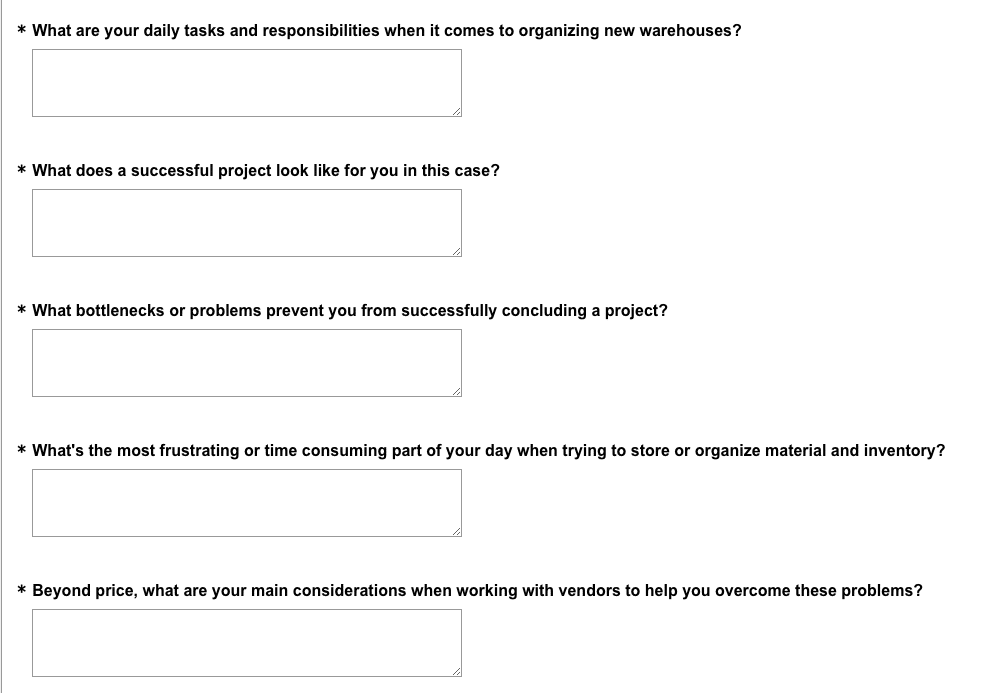


Part #3: What do customers expect from you?
Do you live up to their standards? Do you know what their standards even are?
A ton of companies claim that they will do anything for a customer, but that isn’t always the case.
What can they not stand? What kind of customer service do they expect? What emotion does your product cause them to have? How will it improve their life?
‘Lifestyle’ brands do a great job at meeting customer expectations because they aren’t just selling a product. They’re selling a way of living.
Nike is a perfect example.



They’re not just selling something to you here. In fact, there isn’t even a product being specifically advertised above.
Nike just wants to remind you that their products can make your life better than it already is.
That alone means a seriously long lifetime value for a customer who’s life isn’t the same without your business.
Apple is another powerful example of brands that shape culture or can be used by buyers to build a particular identity.
You aren’t just buying a phone when you purchase an Apple iPhone, you’re buying into a whole world that you didn’t have access to before.
Think about ApplePay, Siri, Carplay, and the Apple watch.
Your phone now becomes an extension of your identity.
Who you were, who you are, and who you want to be can be held in the palm of your hand.
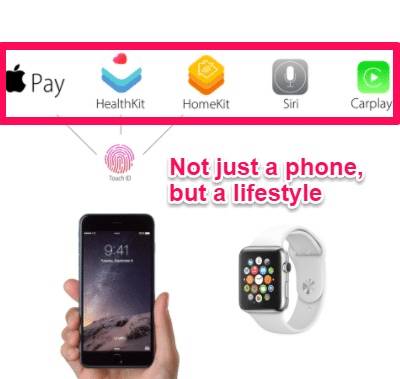


And it’s all secured with your fingerprint. It doesn’t get more personalized than that.
These brands live up to customers’ expectations, and they do it well year after year. Product after product.
Easley said that their idea for making rings wasn’t about money, and their Kickstarter campaigns were backed by jewelry that adds something to the world.
“Whatever your product is, the purpose of it should be to help people in the world have a better life.” he said.
For example, can you tell what kind of company this is below by just looking at the Instagram feed?



It’s a fish taco company, believe it or not.
However, it’s not immediately obvious. They’re Instagram doesn’t feature shot after shot of tacos.
Instead, they focus on the greater lifestyle, interests, and affinities of the customers they’re trying to reach.
Part #4: Appeal to their emotional needs.
A customer’s self esteem affects purchasing decisions.
This is why anti-tobacco ads work so well for preventing people from using tobacco or getting users to quit or cut down.
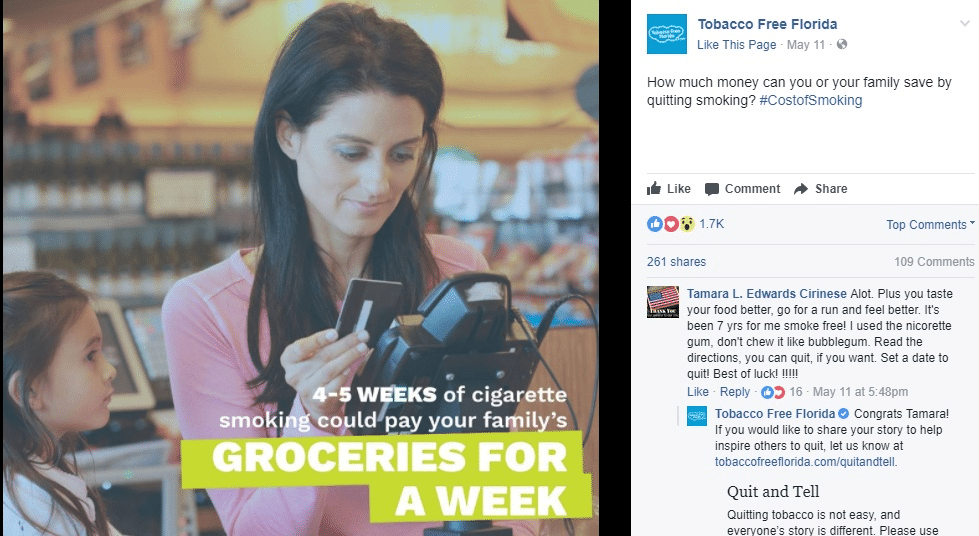


It’s harder to keep smoking when ads from every angle are saying, “save tons of money by cutting out this product that has been scientifically proven to shorten your lifespan.”
Talk about emotional.
Try reversing this tactic. Instead of telling them why they shouldn’t buy something with emotion, tell them why they should.
It might not be your first thought to match up emotions with a buyer’s decisions, but it actually has a huge affect on their purchasing choices.
Buyers want security, love, or self-esteem. And if a product or service can help them find that, they’ll pay big bucks for it.
If they can feel more comfortable, beautiful, or intelligent, they’re more likely to show an interest.
Maybe that’s why the beauty industry is worth over $445 billion dollars. And it isn’t going to slow down anytime soon.
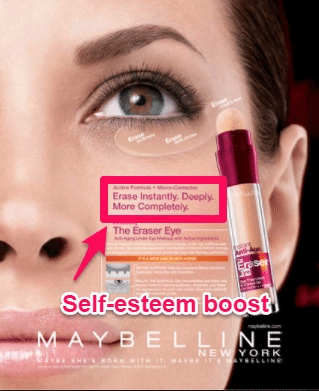


In fact, it’s the perfect market for entrepreneurs because of the limitless demand in the industry.
“In our case, it was that we had a product that would help people to remember the promise they made. There was meaning behind it,” Easley said.
There is huge emotion behind buying a ring that will be worn on someone’s finger for the rest of their life that symbolizes an eternal vow and promise.
Part #5: What is your brand perception?
How would customers describe your brand to family or friends? Does it have a reputation for being ethical and providing great service, or not?
Every brand has a perception. Sometimes it’s good, other times it’s not so good.
You can use Moz’ Fresh Web Explorer to monitor all brand mentions — good and bad.
Just drop in a few keyword variations to see where your brand name is popping up.
For example, here’s what it looks like when we look for “H&M Clothing.”



Some of those brand mentions are fine. However, the third one on the list looks a bit off-topic.
The last thing you want is your brand name showing up on irrelevant topics or heated political discussions.
This way you can see exactly what people believe and their unfiltered view of you.
How to collect data for mindset segmentation
Hold interviews, polls, or send out surveys to decide on a starting point for Mindset Segmentation.
Once you have some more information, you can work a little harder on making your brand personal.
Build brand personas while hitting on each of the steps above. You can even ask customers what their expectations are on a thank you page after purchase.
But, you’ve gotta incentivise them! People rarely take a survey without anything in return.
That brings us to the first step.
Step #1: Create an incentive for customers
Most polls or customer surveys are awful.
They are incredibly boring, and you don’t have a reason to fill them out.
If you want customers to take action on your surveys and polls, you have to give them something in return.
You can’t simply expect a busy customer to take the time out of their day to give you feedback.
Instead, you’ve got to create an incentive.



Would you take 10-15 minutes to complete a survey for a free Chipotle gift card? Highly likely.
Would you do it for nothing in return? Not a chance.
Or how about this offer from Alaska Airlines:



The point is that you need to craft a compelling offer for people to care about your boring, tedious survey.
If you want to make a fast, compelling offer, you can set up discount codes in Shopify. Here’s how:
From your dashboard, click on the discounts page, and click “Create discount”:



Next, in the discount code text box, enter your discount code:
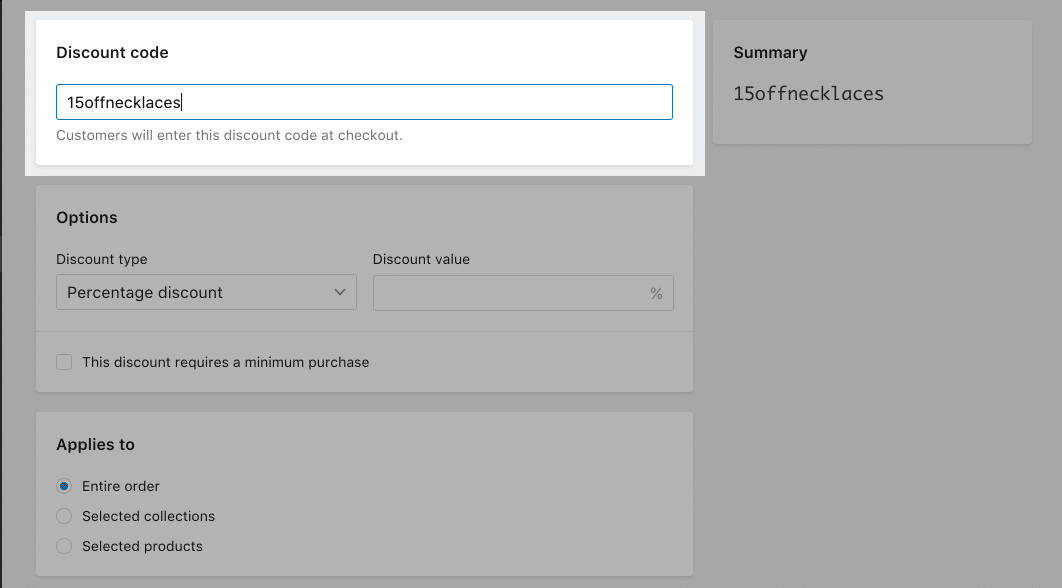


Now simply distribute that discount to people who answer your surveys!
Step #2. Creative polling options to gather feedback.
Use Google Consumer Surveys, polls on social media, or any other forms of data collection.
Check out this customer survey from Twitter by McDonald’s. They’re engaging customers while collecting information about what they prefer out of the three options listed.
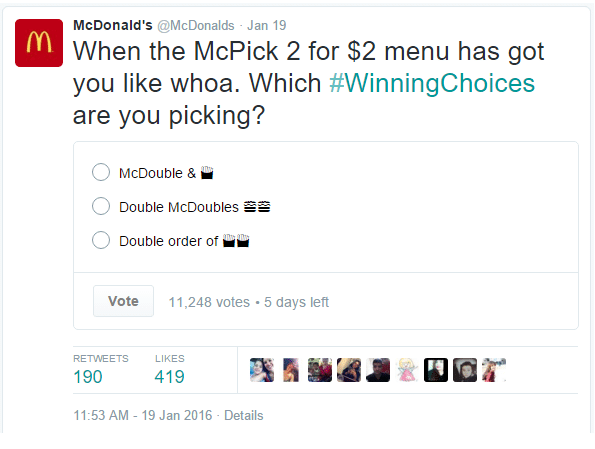


Notice how McDonald’s gathers valuable information without making the poll feel like a chore that will largely get ignored.
And just look: over 22,000 people voted on the survey during the 24-hour period that it ran.
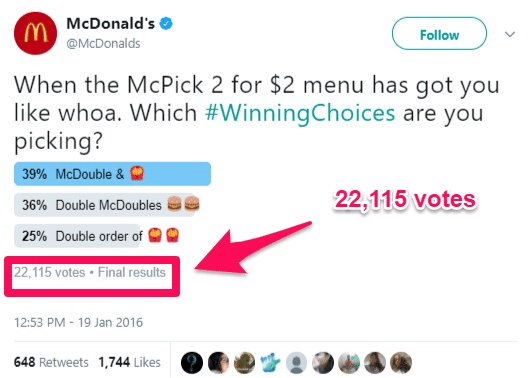


On social media, you can combine dialogue and data collection all-in-one.
With Google’s Consumer Surveys, it costs 10 cents for every question that a user completes, and can range from $1.10 to $3.50 for every question a user answers for 2 to 10 questions.
Each user can answer as many as ten questions in one survey, depending on how many you enter in. Your data will start to pour in within 24 hours of creating a survey.
You can also integrate social media as an option for users who don’t feel like answering questions on the survey.
That way, they won’t be able to actually view your content unless they provide you with some quick data or share your content on social media to shine a spotlight on your website to their friends.
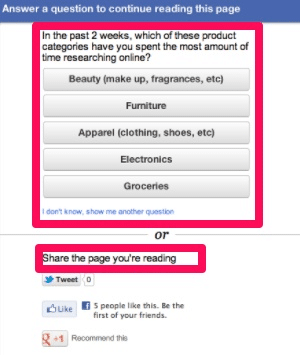


This can be a long process, but it will pay off in a huge way in the end, since you’ll know exactly what they want or don’t want.
Be patient.
Easley says he has made several improvements on his products through customer feedback.
You can quickly get started making a Twitter poll too. Just head over to Twitter and compose a new tweet making sure to select the poll option:
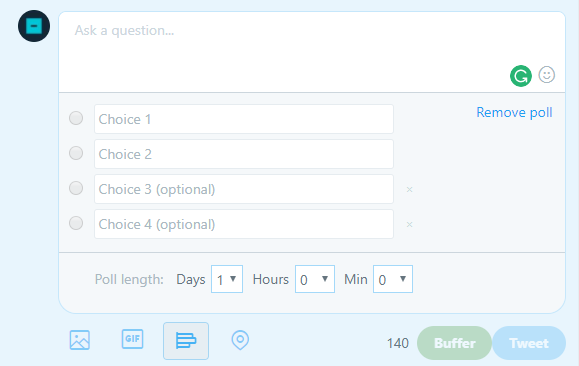


Here you can run a basic, creative poll that’s more fun and interactive than a typical poll.
Use these to ask quick questions from your audience and garner easy feedback.
Step #3. Create engaging competitions to get customer feedback.
If you’re having trouble launching a customer survey that incentivises people, you can use Gleam.
Gleam is a Shopify integration that allows you to run diverse contests that are sure to hook your customer base into entering.
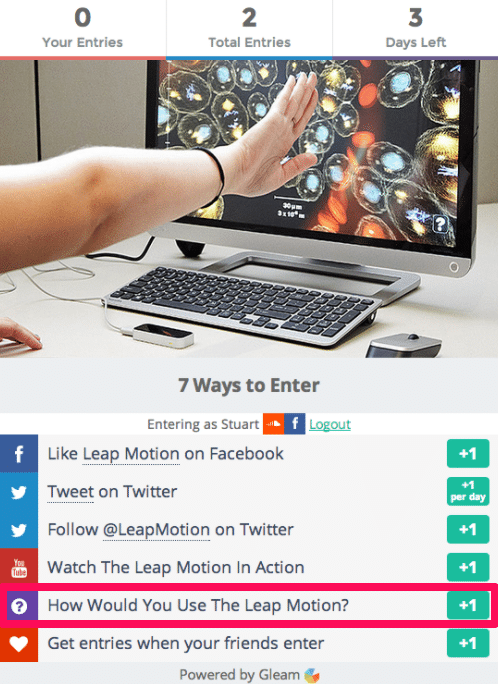


You can use the platform to give away prizes like coupons, gift cards and more.
Then, you can ask important questions to existing customers based on the mindset segmentation questions you develop.
Start asking about how they use your product, what benefits they derive and how it fits their lifestyle.
These basic questions can help you get insight into your customer base.
How to add personal touches
Personalization makes customers want to come back time and time again, creating a win for your Customer Lifetime Value.
Use these three personalization tactics to connect with customers without them thinking twice.
Tip #1: Use personalized emails
Have you ever started shopping on a site and then either created an account or added stuff to your cart only to not purchase or forget about it?
Tons of consumers abandon their carts or make an account on your site only to not buy.
But, this is actually a perfect time to personalize your offer a second time to these hesitant consumers.
Here’s an example of great personalization from Yankee Candle:
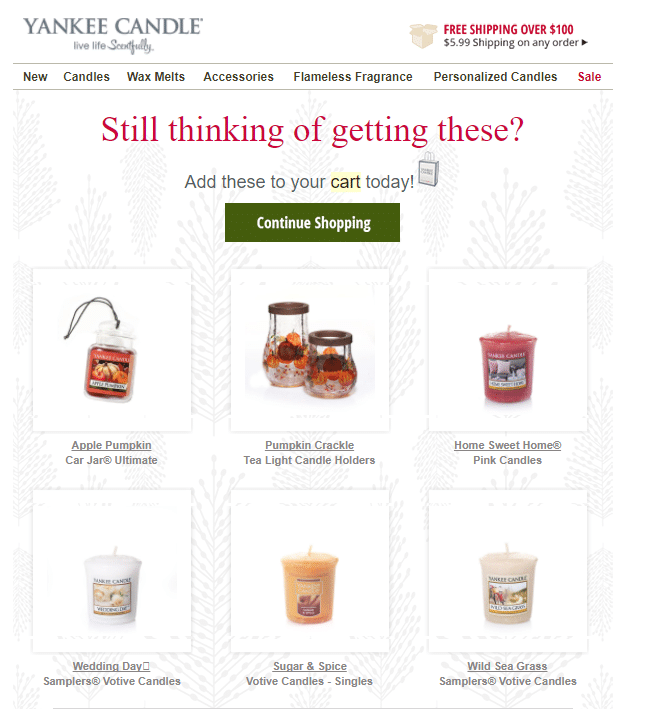


It’s personalized just for me based on what items I was looking at.
Instead of sending me a general email about new products, they sent a personalized email to better cater to my interest in specific products.
It’s incredibly easy to set this up, too.
You can integrate MailChimp and Shopify to sell more with powerful integrations and customer service.
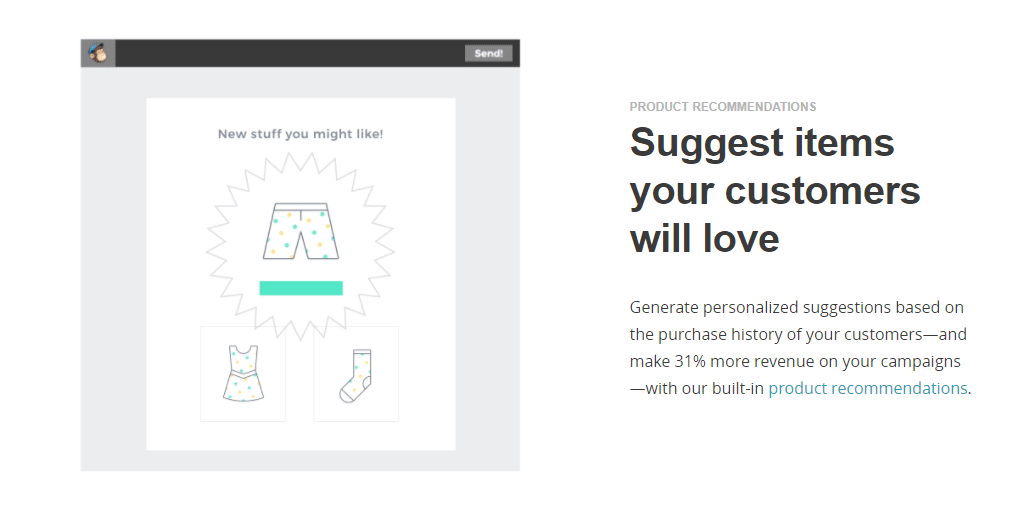


You can easily create additional revenue (31% according to MailChimp) by suggesting items based on order and viewing history.
Personalize the process of buying by showing customers that you understand what they want and need.
Tip #2: Social media based support.
Social media is the best place to provide support to customers.
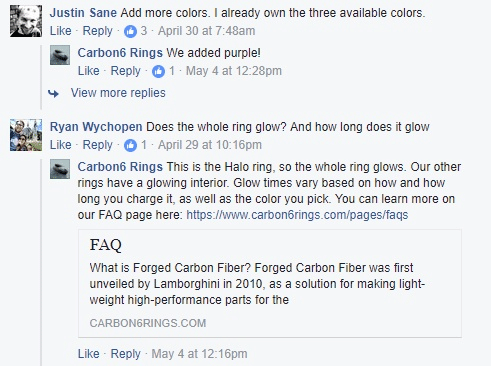


Whether you’re sharing a product or shouting out a customer, social marketing brings in new ones by combining interests and communication.
The Easleys used Facebook to refund a customer her money for a ring, but the problem may not have been resolved without social media.
It had turned out that [a customer] had a ring that she had purchased, and it was going to be for her fiance, and he had passed away in a car accident. It made me grateful that we had started talking to her.
If Carbon6 had never followed up, they would have never known the customer’s situation.
And it would have made for pretty bad business.
Social media is the perfect landscape to start a dialogue with customers to resolve problems.
You should also utilize Shopify’s Facebook Messenger integration to take personalized messaging to the next level.
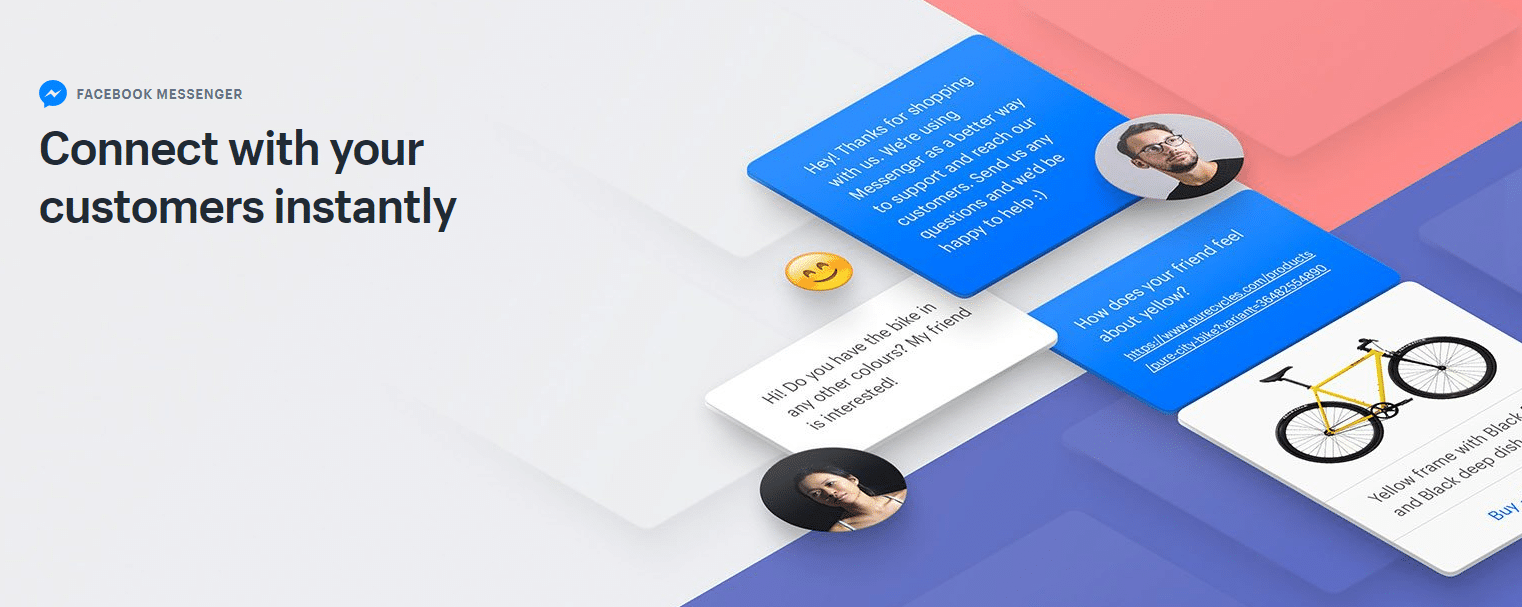


You can answer questions directly via messenger and even provide your customers with crucial, personalized data on their orders:
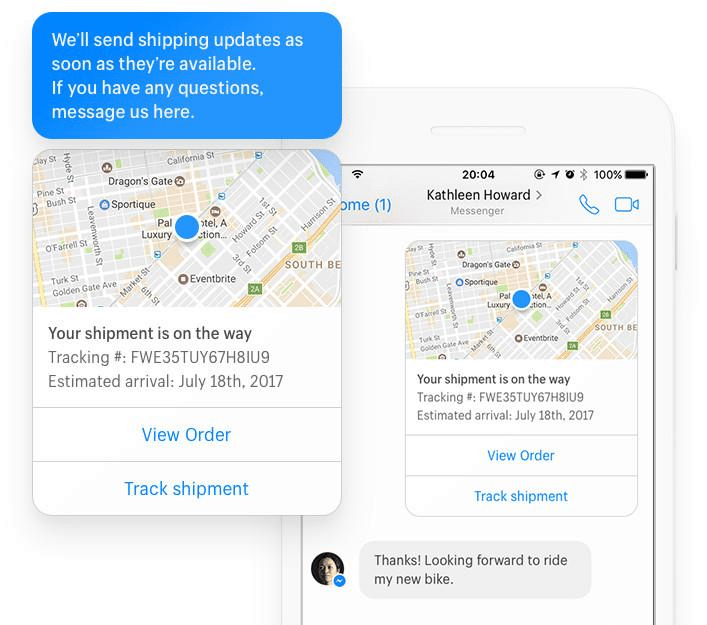


Tip #3: Reward your loyal customers.
Loyalty programs are alive and well. And they work. Here’s why.
Customers are looking for ways to get rewards from the brands that they are already loyal to.
It’s a win-win for them. They already feel a certain affinity. And new loyalty offers push them over the edge.
Personalized messages, apps, or programs are the best way to do this. You want for them to feel special.
This Toys R Us exclusive offer is another great example:



Try to make a loyalty program into an offer that people can’t resist, and they’ll give you their loyalty, love, and references in return.
You can get started with Smile.io on Shopfiy.
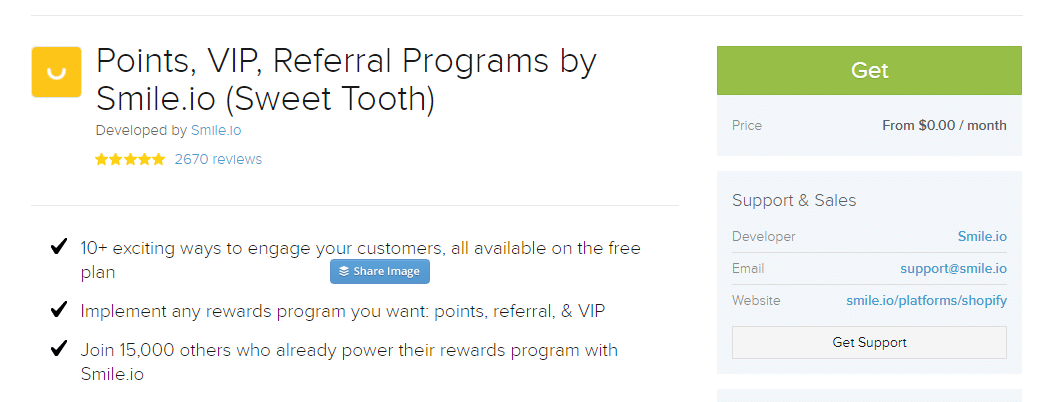


This application allows you to create a loyalty program to give back to your best customers!
And, it’s free. You can offer points-based systems of reward, or simply reward customers with a coupon or discount based on their spending history.
It’s a great way to nurture current customers and keep them coming back for more.
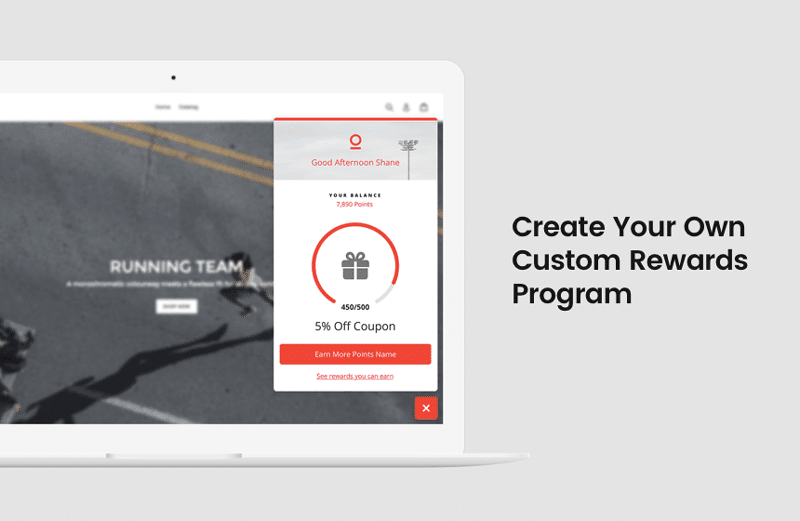


Now it’s your turn to share the best personalized service examples
Mindset Segmentation can help make your customers feel more like human beings than just transactions.
So start by identifying your customers’ beliefs, understand their hopes, dreams, fears, and expectations.
Appeal to their emotional needs with an effective brand perception.
Personalize your ads and brand outreach every chance you get by speaking to consumers like friends.
Don’t forget the extra personal touches like personalized profiles, social media support, and customer reward programs.
Collect data with social media polls using something like Google Consumer Surveys if you’re struggling to hit the numbers you need.
Marketing is actually pretty easy when you come to think of it.
Pay attention to what customers really want. And give them exactly that every time.
Make customers feel like humans rather than your source of income.
What companies do you frequent because of their amazing customer service?
How do you personalize a shopper’s experience to keep them coming back (and buying) in the future?
Share your best tips with us in the comments below!

Comments